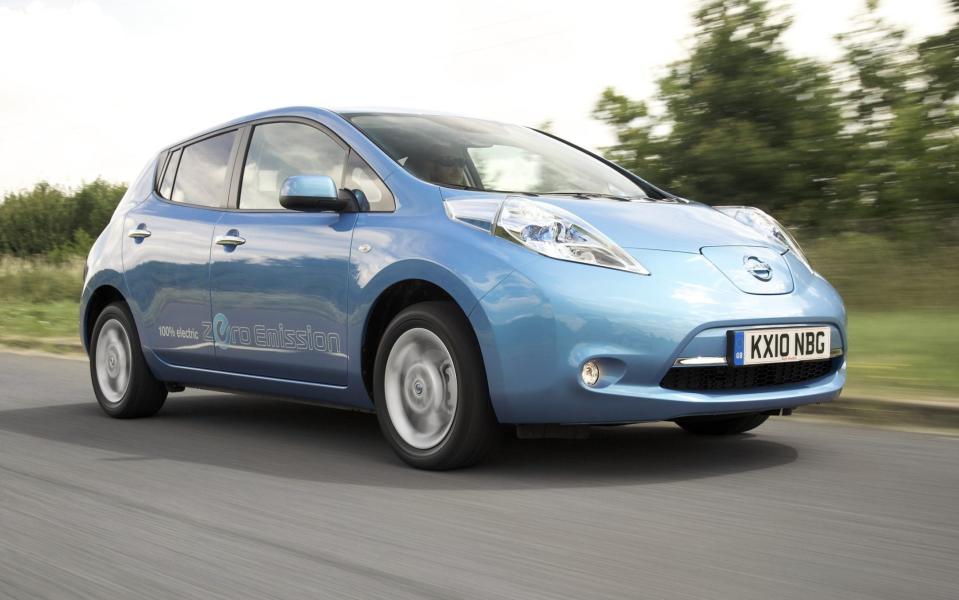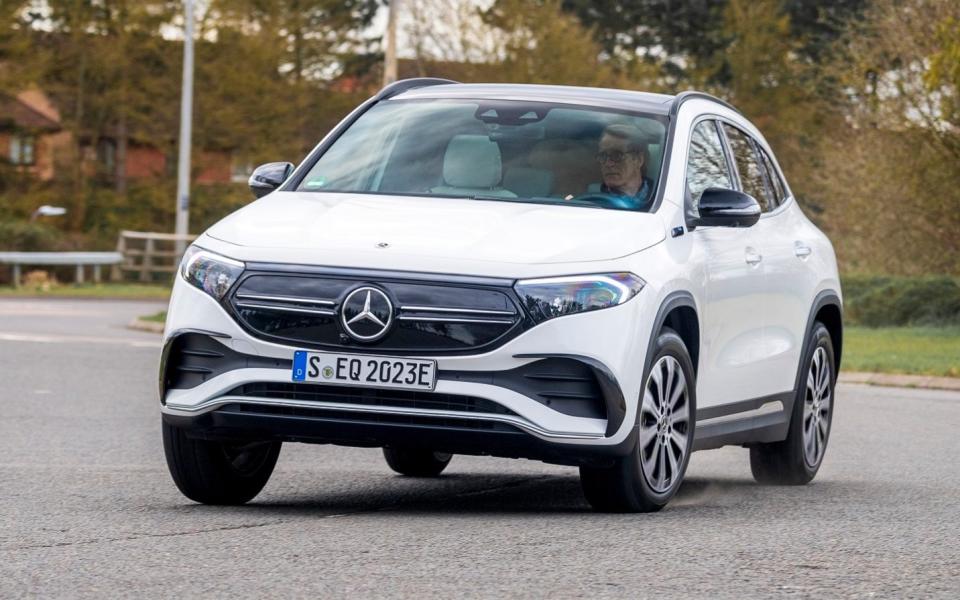How long will an electric car’s battery last?

Ask any electric car maker how long the main drive battery will last and the loudest sound you’ll hear is the shuffling of feet. No one wants to answer the question, yet it’s crucial data for consumers, for the EV market as a whole, for the Government’s electrification strategy and for the environment.
An understanding of a car’s longevity is a vital part of assessing its value during its life. That value affects its price, or financing cost if purchased on a Personal Contract Plan (PCP) agreement, and that in turn affects the market for EV cars.
It also affects the environment, because of the large CO2 release in manufacturing the battery. According to IVL, the Swedish Environmental Research Institute, the CO2 from lithium-ion battery production is between 61kg to 106kg per kWh depending on where the electricity used in the production process comes from.
The cumulative effect of having to renew battery-electric cars every 10 years compared with, say, every 15 years makes an enormous difference to their environmental impact.
Lithium-ion costs
Yet, so far, the industry has publicly concentrated mostly on the cost of lithium-ion cells, which has dropped significantly in recent years. In 2015 General Motors suggested battery costs would drop as low as $100 (£73) per kWh by this year, but we’re still a way off that. Last month, Luca de Meo, chief executive of Renault, said that it might take the introduction of less energy-dense but cheaper lithium-ion phosphate battery chemistry in a few years to get the price down to that level.

On the subject of the service life of the current generation of lithium-ion batteries, he was deliberately vague, although he did reveal that Renault is planning a refurbishment facility at its Flins plant in northern France.
Avoiding the question?
Or take Tomas Ingenlath, chief executive of Polestar, who looked pretty awkward when asked the same question last year at the launch of the Polestar 2, a battery-electric super-saloon.
“It’s very difficult to say whether it will last for eight or 24 years,” he said. “It depends on whether the EV is used in a decent way and charged slowly. Everyone is a bit more relaxed about the battery question now and the technology will evolve and change in the next decade.”
I’m not exactly sure that everyone is “a bit more relaxed about the battery question”, especially as it directly affects the cost of running your battery car even if you only own it for a couple of years.
What de Meo and his contemporaries tend to do is dangle the old razzle dazzle of a second life for automotive batteries, all harnessed together as a grid-balancing tools (although they have to be treated and charged very gently in such situations), or even recycled to recover the lithium-ion and cobalt. There are seldom any serious cost implications offered to EV owners when these options are discussed.
Yet battery cars are fairly simple, with few moving parts and they can be pretty easy on their drivetrains and brakes, so their mechanical structure might last even longer than the average 13.9-year life of a conventional car in the UK.

But, even at 10 years old, the cost of a replacement battery relative to the value of the car might make that replacement uneconomic. Tesla CEO Elon Musk was recently quoted as saying replacement batteries could be as much as $7,000 (£5,000), but many experts predict it could be more than three times that and, that by the time they are required, the technology or chemistry might have moved on to make a replacement battery not just economically unjustifiable but impossible.
So, at the same time as the EU and UK are calling for “a right to repair” for fast-moving consumer durables to limit their effect on the environment, they are engaged on mandating the sale of electric cars without paying much heed to their built-in early obsolescence – because they don’t know how long their batteries will last.
How long will your battery last – part one
We know what damages batteries, we know some of the chemical processes that degrade the ability of the anode and cathode to store ions over time and we know the things you shouldn’t do and those that you should. But can we precisely predict battery longevity?
That depends, says Joshua Gordon, EV strategy manager at Geotab, a fleet-management and telematics company, which in 2018 acquired FleetCarma, which has more than 13 years of experience monitoring electric vehicles and recharging habits.

Last autumn, at the Cenex low-carbon vehicle conference, Geotab published the results of a study it had made into the battery longevity of 6,300 fleet and private customers with more than 1.8 million days of data. It also unveiled its battery life predictor for fleets based on that research.
A lithium-ion battery’s ability to hold its as-new state of charge (SOH) is affected by: time; high or low temperatures; maintaining a continual high (or SOC); repeated high-current charging; and lots of energy cycling of the battery.
“We are interested in what is happening in real-life,” said Gordon. “How are EV batteries performing within fleets, and at what rate are the batteries degrading?”
Geotab’s figures plot recharging data against mileages and show that from new there’s an average degradation of 2.3 per cent a year, but its figures stop at around five years, where the graphs show that as the battery ages in service the curve charting degradation starts to head downwards pretty fast
Gordon says that the degradation depends on the vehicle under analysis. “If you take the Nissan Leaf,” he says, “we have data for more than six years, therefore conclusions can be made with more certainty. However, with other vehicles, the time under analysis was less.

“Therefore, I would stick with what we actually know, on average 2.3% a year degradation, although it varies between make, model and year.”
Ways to kill a battery
While Gordon cautions against extrapolating Geotab’s data, the temptation is irresistible. Geotab shows a graph of typical battery SOH as an S-shaped curve over 48 months. Most car manufacturers guarantee their batteries won’t fall below a 70 per cent SOH in the first seven or eight years or 150,000km (93,000 miles).
For example, taking an initial 80kWh battery degrading at the annual 2.3 per cent suggested by Geotab, the battery SOH will deteriorate to 67.9KWh in eight years, which is about 85 per cent of its initial SOH – if the deterioration continued at 2.3 per cent it would take 15.3 years to fall below 70 per cent of its initial capacity. But that’s an oversimplification; there are lots of ways to kill a battery more quickly.
Geotab found little difference between high and low amounts of use in the first four years of operation and a similarly small effect of charging with either a household plug or a household wall box. Fast charging on DC chargers, however, has a big effect, with those batteries subject to repeated DC charging more than three times a month showing almost twice the rate of degradation. “We found DC fast charging to have the greatest impact on degradation over time,” says Gordon.
Temperature, too, has a highly deleterious effect. Batteries like to exist at 21 to 21.5 degrees C and Gordon’s original paper suggested that EV users should avoid using their cars on hot days and park in the shade – his figures also suggest that extreme cold or hot temperatures can reduce the available range by as much as 50 per cent.

The level of charge when not being used will also affect battery life and Geotab’s data suggests that batteries shouldn’t be charged to 100 per cent, unless you are planning a long journey, or left at the lowest state of charge for long periods. Car makers leave buffer zones, which are state of charge levels beyond which the battery software will not permit, but even within that threshold consumers can accelerate degradation by charging or discharging to the maximum.
How long will your battery last – part two
Geotab’s data is all very well, but it’s a snapshot and mostly doesn’t go beyond five years. So, what happens inside the battery over that time and for longer periods?
In search of answers we went to David Hall, research associate in the Department of Chemistry at the University of Cambridge. He works on battery longevity there and was previously part of Jeff Dahn’s renowned battery lab teams at Dalhousie University in Halifax, Canada.
Dahn, (who is also a technical advisor to Tesla) and his team helped develop the automotive lithium-ion cell and some of the materials they developed are used in automotive drive batteries today, as are their mathematical models and algorithms which manufacturers use to validate their battery data.
So how long does an automotive battery last, Mr Hall?
“This is a very difficult, difficult question,” he admits; “one of the hardest in the field. It’s what our group was doing in Halifax, testing and measuring lifetime predictions and building more precise instruments to measure it.”

He explains that there are several pathways of battery deterioration, mechanical and chemical, and that measuring it is difficult.
“You are touching on something termed ‘rollover failure’,” he says, although it has a few other names, such as ‘knee’ and ‘turning point’. “In short, battery degradation certainly can accelerate, but it isn’t trivial to predict when or whether it will.”
He says that his main work is to do with the problem of the growth of electrical resistance in the cell – “or how quickly the lithium ions are getting slower…
“Like a lot of things that come with degradation,” he says, “the difficult thing is to predict the rate.”
How a lithium-ion battery works (and how it starts to degrade)
So, we know that lithium-ion batteries comprise five main components: cathode; anode; separator; current collectors; and electrolyte. The anode and cathode store the lithium and the electrolyte is the medium through which the positively-charged lithium ions travel.
When you charge a battery, the positive electrode (or cathode) gives up some of its lithium ions, which travel through the electrolyte and the separator to the negative electrode (or anode). And when you discharge the battery, these lithium ions move from the anode to the cathode generating a flow of electrons through the device (an electric motor) you are powering with the battery. It’s a reversible process which will continue for many years, but just how many?

Serena Corr, Chair in Functional Materials and Professor in Chemical and Biological Engineering at the University of Sheffield, explained to us last year that this charge/discharge process isn’t without consequence to the health and longevity of the battery.
“The materials that make up your electrodes are typically layered structures, for example the cathode material can be lithium-nickel-manganese-cobalt oxide (or NMC for short),” she said. “One can think of this cathode like sheets of stacked paper, in between which the lithium ions can slot. As this material undergoes multiple charge and discharge cycles, there are mechanical and chemical processes that can ‘weather’ the cathode and lead to its degradation. These can take the form of rearrangement of atoms, volume changes and even particle cracking.”
There is also a process of “coating”, where reactions of the electrolyte can lead to a permanent covering on parts of the electrode, which can reduce its capacity to accommodate ions and therefore its ability to hold a charge. This is also affected by how you treat the battery.
Hall explains further that the cathode loses oxygen over time and that can cause a gas build-up and the creation of acids. “Those acids can affect the anode even more than they do the cathode,” he says, “which is known as ‘crosstalk’.”
The role of cobalt is crucial here as most car makers are pushing to reduce the cobalt content because of shortages and human rights issues in the Democratic Republic of the Congo, which is where most of it is mined.
As Hall says: “When you change the relative amounts of cobalt and nickel, it affects the production rate of oxygen.”

While he’s reluctant to put any figure on battery life, he offers the ‘Million Mile Battery’ which is outlined in a paper by Jessie Harlow et al in the Journal of The Electrochemical Society, vol 166, no 13. This proposes a series of durability and stress tests for lithium-ion cells for researchers and companies and suggests that its test subject, a good lithium-ion pouch-cell battery, had the capability of powering a car for more than one million miles and “last at least two decades in grid energy storage”.
It shouldn’t be confused with the ‘million-mile durability’ trailed by Elon Musk in the run-up to Tesla’s investors’ Battery Day last year.
“Lithium-cobalt oxide cells in medical devices are still going strong after 10 years,” says Hall. “The big thing to extend battery life is temperature control and that’s much easier with grid storage [than in cars].”
Longevity is full of dilemmas
“Well, it’s partly temperature,” corrects Hall, before pausing, “but also the designs that tolerate fast charging and a high range aren’t the same, but we all want a battery that does both.
“It comes down to whether you are going to improve the engineering of the cell, or improve the stability of the components in the cell you have; they are related but independent.”
So, what of competing technologies, such as lithium sulphur? Hall bridles at the word ‘competing’. “Most automotive batteries are a process of fitting energy into a metal can,” he says. “You can fill it with chemistry, but there are still metal foils in there and plastic separators. You can make those thinner but they mustn’t break. You can make improvements to the electrolyte and the porosity of some of the active materials to get higher energy. It’s reasonable to assume that we will continue to make lots of small improvements to the lithium-ion cell”.

In fact, unlike a lot of battery pundits, Hall thinks the lithium-ion cell will be with us for a lot longer than we thought, as it gradually gets improved.
“The question often boils down to: do you build a better battery or do you improve your prediction?” he says. “When you see the latest news in the media, it often comes down to the former and not the latter. But it won’t be a case of THE battery, we’re going to see a lot more customised batteries in future.”
Presumably they’ll last even longer than the current generation, but we still don’t know how long that may be.
How long will your battery last – part three
Over to Maurizio Salvia, Fiat’s chief engineer for A-segment battery-electric propulsion. He’s the man responsible for the battery drivetrain in Fiat’s new 500 EV.
So, how long will the battery last Maurizio? He pauses (as well he might). “Let’s start with the warranty,” he says, “our general approach on durability is to have a lifetime validated for a calendar time of 10 years.” In fact, the little Fiat’s Samsung-cell battery is warrantied to maintain at least 70 per cent of its initial 42kWh energy capacity for eight years or 150,000km (93,225 miles). “This is the important thing for customers,” says Salvia. “And with data we are confirming these values.”

If it sounds like he’s wriggling on the hook, that’s only partly true. It is because, as Hall says, no one knows how long an individual battery will last, but it isn’t because Salvia and his team have done everything it takes to get the battery through and beyond its warranty conditions, up to 10 years in fact.
What about the scenario of the worst customer in the world, always high current charging and never letting the battery rest? Salvia says he’ll protect the 500’s battery from my worst excesses. “We report in the usage document [the manual] that the type of charging will have an impact on the life of the battery,” he says. Fiat’s assumption is based on the availability of high-current charging, assuming that the 500 will be high-current charged no more than once or twice a week. “Normal usage is related to this algorithm to fully protect the battery from high-current charging,” says Salvia.
But then comes the crunch. Charge it with high current too many times in a fixed period and the system will step in and restrict the current flow to protect the battery… It’s going to be hard to be the worst-case customer with this car.
Conclusion
As yet there is no definitive answer, although all our interviewees gave us a better understanding of how difficult it is to predict battery life. Perhaps Salvia gave us an answer of sorts. Like most new battery cars, Fiat’s data shows a useful life of more than a decade, because its protective software has been programmed to make that happen. As one senior engineer (actually my brother) said: “He wasn’t going to give you the B10 figure where they statistically calculate the point where 10 per cent of the population of batteries will fail, but you can bet Fiat has worked through those figures…”
Jochen Eck, Mercedes-Benz’s senior manager of vehicle testing for compact cars, was clear that while his company warranties the battery in the new EQA family SUV for eight years and 100,000 miles, his company engineers its cars to last for 15 years or 186,450 miles and the 66.6kWh (net) lithium-ion battery would be no exception.

The EQA has no fast-charging protective software, but he asserts that “you would have to try very hard to destroy the battery through fast charging”.
What all these answers indicate, though, is that those planning on using a big-battery EV as an everyday, long-distance commuter and regularly using high-current DC charging might find their style somewhat cramped as (some) algorithms step in and slow the current flow. As we always say, carry snacks and a flask; you might be spending more time recharging than you think.
In the meantime, the advice is charge slowly, buy a bigger battery than you think you need and use no more than 80 per cent of its capacity most of the time.
In the absence of hard data, meanwhile, it might be useful if the industry could get on and agree a universal battery-state-of-health document, which second-hand buyers can look at to determine the current energy capacity of the battery and how many times it has been fast charged and at what intervals in its life.
It might also be a positive move if it came up with some standard battery module sizes so we could replace the battery if needs be and that it might not be horrendously expensive. None of this would be perfect, but it would be a start on the road to improving public confidence in an all-electric future and EV cars old and new.
For new and used buying guides, tips and expert advice, visit our Advice section, or sign up to our newsletter here
To talk all things motoring with the Telegraph Cars team join the Telegraph Motoring Club Facebook group here

 Yahoo News
Yahoo News 
